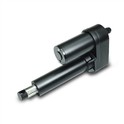Hey there! As a gas spring supplier, I know how important it is to check the gas pressure in gas springs. Whether you're using a Gas Spring for Tool Box, a Murphy Bed Gas Spring, or a Gas Spring for Kitchen Cabinet, maintaining the right gas pressure ensures optimal performance and longevity.
So, let's dive into how you can check the gas pressure in a gas spring. First off, you need to understand why gas pressure matters. Gas springs work by using compressed gas to provide a force that helps in lifting, supporting, or counterbalancing loads. If the gas pressure is too low, the gas spring won't be able to perform its function effectively. For example, a toolbox gas spring with low pressure might not be able to keep the lid open properly, or a kitchen cabinet gas spring might not close smoothly.
Tools You'll Need
Before you start checking the gas pressure, gather the necessary tools. You'll need a pressure gauge specifically designed for gas springs. These gauges are usually available at hardware stores or from gas spring suppliers. Make sure the gauge is compatible with the type of gas spring you're working with. You might also need a set of wrenches to remove any covers or fittings that are blocking access to the gas spring's valve.
Safety First
Safety is always a top priority when working with gas springs. Gas springs are under high pressure, so there's a risk of injury if they're not handled correctly. Wear safety glasses to protect your eyes from any debris that might be released when you connect the pressure gauge. Also, make sure the gas spring is properly secured before you start the checking process. If it's installed in a piece of equipment, ensure that the equipment is stable and won't tip over.
Step-by-Step Guide to Checking Gas Pressure
Step 1: Locate the Valve
The first step is to find the valve on the gas spring. This valve is where you'll connect the pressure gauge. The location of the valve can vary depending on the type and design of the gas spring. In some gas springs, the valve is located at the end of the cylinder, while in others, it might be on the side. Refer to the gas spring's manual or consult with the manufacturer if you're having trouble finding the valve.
Step 2: Prepare the Pressure Gauge
Once you've located the valve, prepare the pressure gauge. Make sure the gauge is clean and in good working condition. Check the gauge's instructions to see if it needs to be calibrated before use. Some gauges come pre - calibrated, but it's always a good idea to double - check.
Step 3: Connect the Pressure Gauge
Carefully connect the pressure gauge to the gas spring's valve. Make sure the connection is tight to prevent any gas from leaking. You might need to use a wrench to secure the connection properly. Once the gauge is connected, you should start to see the pressure reading on the gauge's display.
Step 4: Read the Pressure
Take a close look at the pressure gauge and note down the reading. Compare this reading to the recommended pressure range for your gas spring. The recommended pressure range is usually specified by the manufacturer and can be found in the gas spring's manual. If the reading is within the recommended range, then your gas spring is in good condition.
Step 5: Disconnect the Pressure Gauge
After you've taken the reading, carefully disconnect the pressure gauge from the valve. Make sure to do this slowly to avoid any sudden release of gas. Once the gauge is disconnected, check the valve to make sure it's still in good condition and not leaking.
What to Do If the Pressure Is Too Low or Too High
If the gas pressure is too low, the gas spring might need to be recharged. Recharging a gas spring should be done by a professional, as it involves handling compressed gas. Contact your gas spring supplier or a qualified technician to recharge the gas spring.
On the other hand, if the pressure is too high, it could be a sign of a problem with the gas spring. High pressure can cause the gas spring to fail prematurely or even pose a safety risk. In this case, it's best to replace the gas spring with a new one.


Regular Maintenance
Checking the gas pressure in your gas springs should be part of your regular maintenance routine. How often you should check the pressure depends on how frequently the gas spring is used. For gas springs that are used frequently, such as those in toolboxes or kitchen cabinets, it's a good idea to check the pressure every few months. For gas springs that are used less often, like those in Murphy beds, you can check the pressure once or twice a year.
Benefits of Regular Pressure Checks
Regularly checking the gas pressure in your gas springs has several benefits. It helps to ensure that the gas springs are working at their best, which means better performance and reliability. It can also extend the lifespan of the gas springs, saving you money in the long run. By catching any pressure issues early, you can prevent more serious problems from developing, such as gas spring failure or damage to the equipment they're installed in.
Conclusion
Checking the gas pressure in a gas spring is a relatively simple process, but it's an important one. By following the steps outlined above and using the right tools, you can keep your gas springs in top condition. Whether you're using a Gas Spring for Tool Box, a Murphy Bed Gas Spring, or a Gas Spring for Kitchen Cabinet, regular pressure checks will help you get the most out of your gas springs.
If you're in the market for high - quality gas springs or need more information about gas spring maintenance, don't hesitate to reach out. We're here to help you with all your gas spring needs. Whether you're a DIY enthusiast or a professional in the industry, we can provide you with the right gas springs and advice to keep your projects running smoothly. Contact us today to start a conversation about your gas spring requirements!
References
- Gas Spring Manufacturer's Manuals
- Hardware Store Guides on Gas Spring Maintenance






